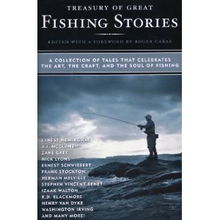Introduction:
For anglers seeking a unique and rewarding fishing experience, targeting fathead minnows can be an exciting challenge. These small, yet feisty fish are known for their aggressive feeding habits and can be quite enjoyable to catch. In this article, we will delve into the art of angling for fathead minnows, providing you with essential tips and techniques to improve your chances of landing these lively creatures.
Understanding Fathead Minnows:
Before we dive into the fishing techniques, it's important to have a basic understanding of fathead minnows. Also known as golden shiners, these fish are native to North America and are often found in ponds, lakes, and slow-moving streams. They are known for their distinctive, round heads and are a popular baitfish among anglers.
Choosing the Right Equipment:
Rod and Reel: For fathead minnow fishing, a lightweight spinning rod with a sensitive tip is ideal. A reel with a smooth drag and a good line capacity is also crucial.
Line: Use a monofilament line with a thickness of 4 to 6 pounds. This will provide enough strength to handle the fish while remaining flexible enough to detect subtle bites.

Hooks: Small hooks, such as size 8 or 10, are typically used for fathead minnows. These hooks should be sharp and properly matched to the bait you're using.
Bait: Live bait, such as fathead minnows themselves, is the most effective. However, artificial lures can also be used, especially in areas where live bait is not allowed or unavailable.
Techniques for Catching Fathead Minnows:
Locate the Schools: Fathead minnows often travel in schools, so finding one can lead to catching many. Look for areas with dense vegetation, fallen logs, or areas with a lot of aquatic life, as these are common habitats for fathead minnows.
Cast and Retrieve: Once you've located a school, cast your bait out and let it sink to the bottom. Then, slowly retrieve it back to the boat or shore, mimicking the natural movement of the minnows.
Trolling: Trolling can be an effective method, especially in deeper waters. Attach a bobber to your line and let it drift with the current, occasionally reeling in to create a wave-like motion that mimics the natural swimming pattern of fathead minnows.
Jigging: In areas with heavy cover, such as around logs or dense vegetation, jigging can be a great technique. Use a small jig and work it through the cover, twitching it occasionally to mimic a struggling minnow.
Artificial Lures: When using artificial lures, opt for small, shad-shaped lures that resemble the natural prey of fathead minnows. Retrieve the lure with a steady, erratic motion to mimic the swimming action of the fish.
Advanced Techniques:
Sticky Baiting: Attach a small piece of bait to your hook with a little bit of saliva or wax to keep it on the hook. This can increase the effectiveness of your live bait.
Using a Bobber: A bobber can help you detect subtle bites and keep your bait at a consistent depth. Adjust the bobber's position to match the depth of the water and the feeding level of the minnows.
Seasonal Considerations: Fathead minnows are most active during the spring and summer months. During these seasons, they are more likely to be found in shallow waters where they can spawn.
Conclusion:
Catching fathead minnows can be a delightful pastime for anglers of all levels. By understanding the habits of these fish and employing the right techniques, you can increase your chances of success. Remember to always practice responsible fishing and respect the environment. With patience and practice, you'll soon be a seasoned angler, reeling in these lively baitfish with ease. Happy fishing!












